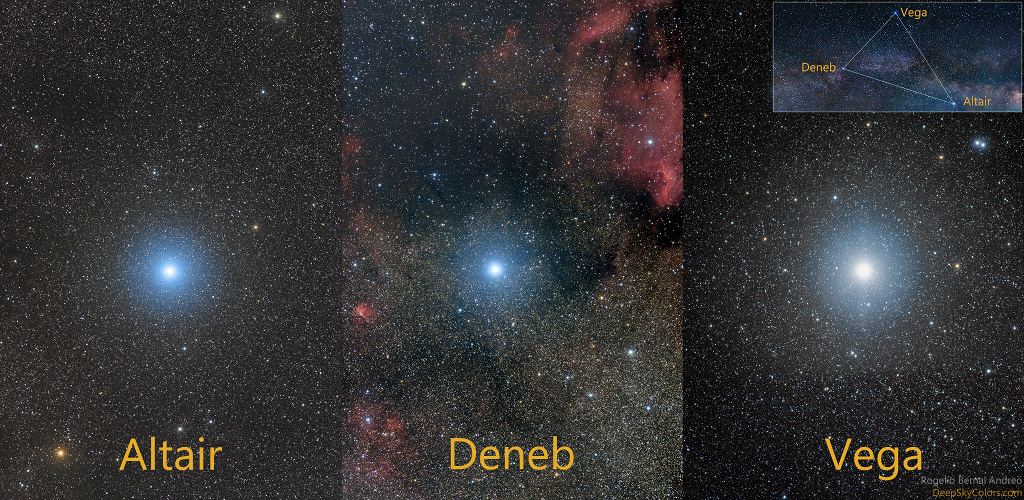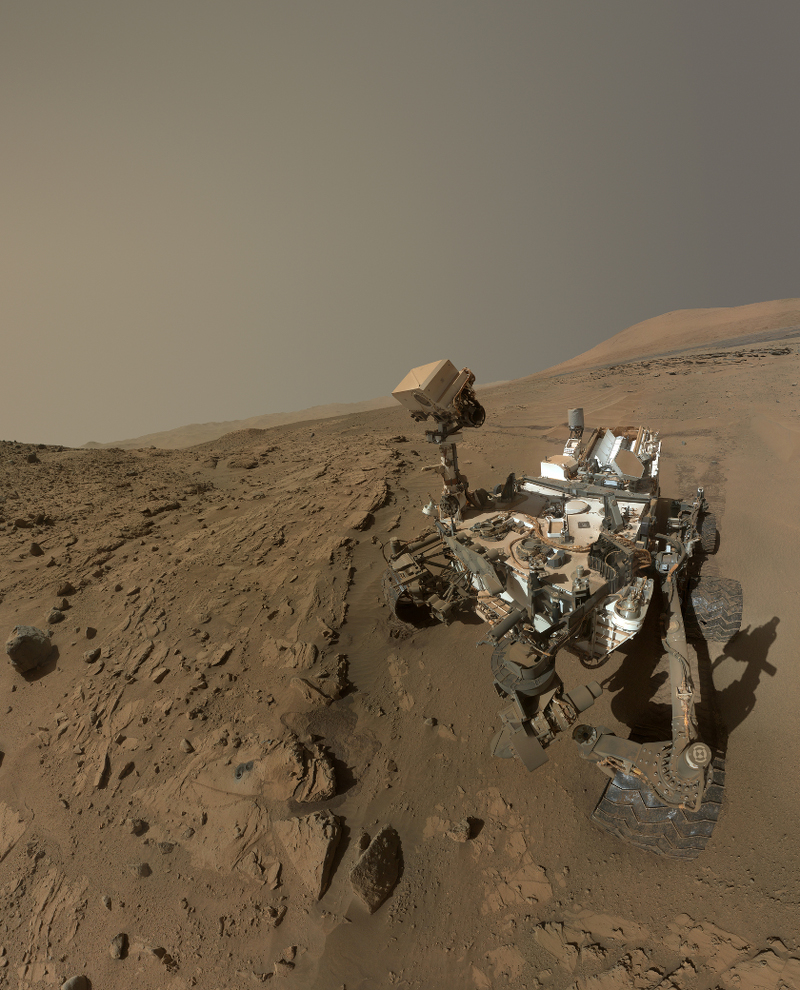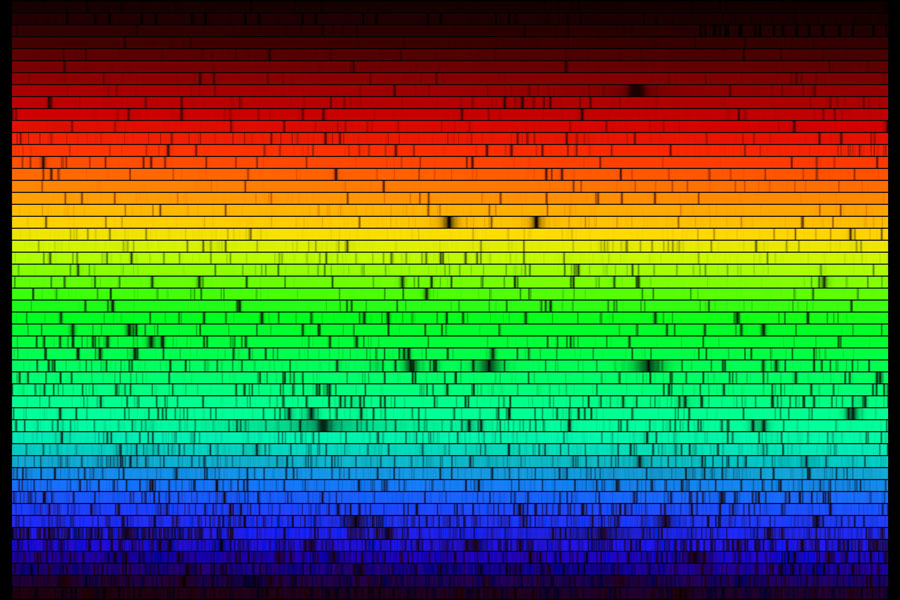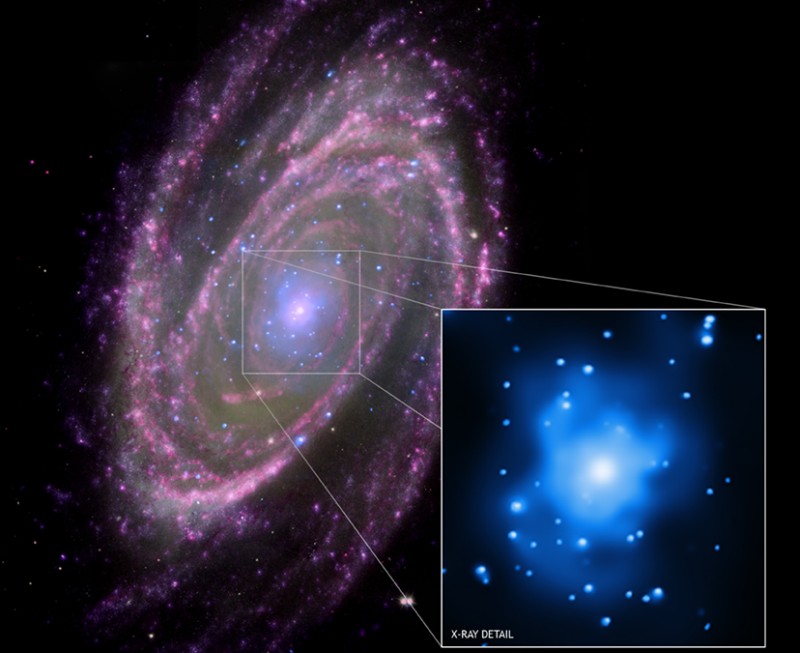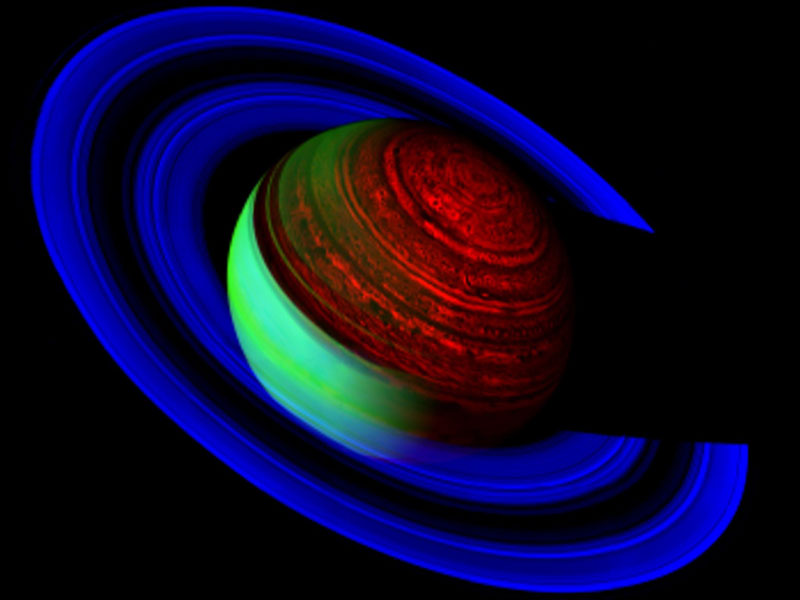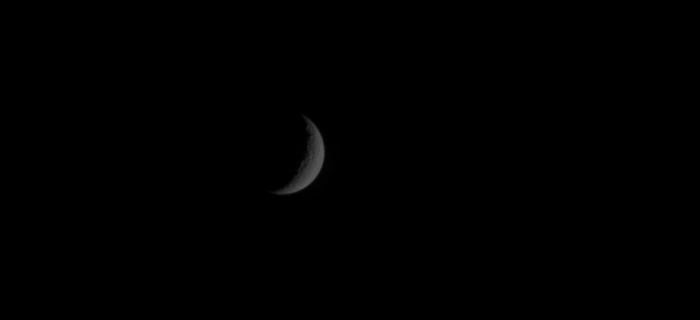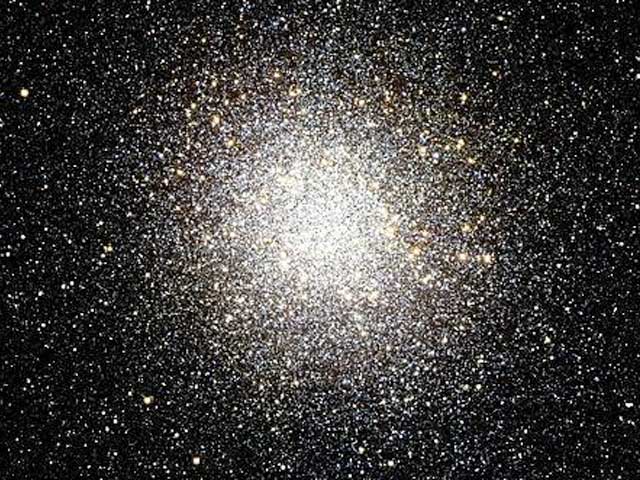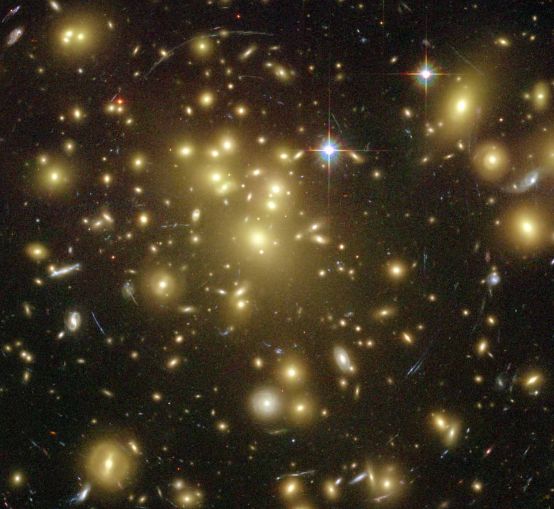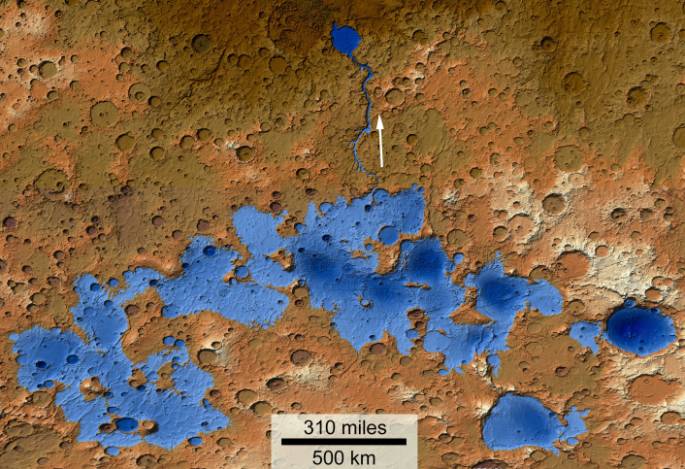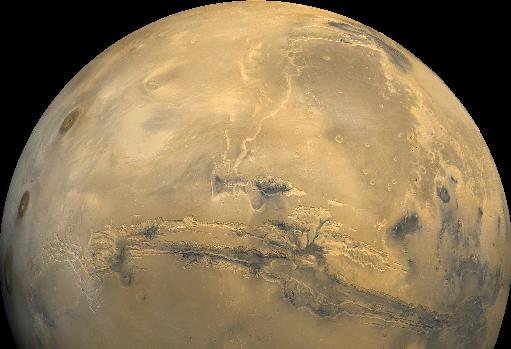| << Previous | Index | Next >> |
2015 Rising at the start of a northern summer's night, these three bright stars form the familiar asterism known as the Summer Triangle. Altair, Deneb, and Vega are the alpha stars of their respective constellations, Aquila, Cygnus, and Lyra, nestled near the Milky Way. Close in apparent brightness the three do look similar in these telescopic portraits, but all have their own stellar stories. Their similar appearance hides the fact that the Summer Triangle stars actually span a large range in intrinsic luminosity and distance. A main sequence dwarf star, Altair is some 10 times brighter than the Sun and 17 light-years away, while Vega, also a hydrogen-fusing dwarf, is around 30 times brighter than the Sun and lies 25 light-years away. Supergiant Deneb, at about 54,000 times the solar luminosity, lies some 1,400 light-years distant. Of course, with a whitish blue hue, the stars of the Summer Triangle are all hotter than the Sun.
2014 June 24th marked the first full Martian year of the Curiosity Rover's exploration of the surface of the Red Planet. That's 687 Earth days or 669 sols since its landing on August 5, 2012. To celebrate, consider this self-portrait of the car-sized robot posing next to a rocky outcrop dubbed Windjana, its recent drilling and sampling site. The mosaicked selfie was constructed with frames taken this April and May using the rover's Mars Hand Lens Imager (MAHLI), intended for close-up work and mounted at the end of the rover's robotic arm. The MAHLI frames used exclude sections that show the arm itself and so MAHLI and the robotic arm are not seen. Famous for panoramic views, the rover's Mastcam is visible though, on top of the tall mast staring toward the left and down at the drill hole.
2013 This panoramic night scene from June 8 looks out across a Moscow skyline from atop the main building of Lomonosov Moscow State University. Shining in the darkened sky above are widespread noctilucent clouds. From the edge of space, about 80 kilometers above Earth's surface, the icy clouds can still reflect sunlight even though the Sun itself is below the horizon as seen from the ground. Usually spotted at high latitudes in summer months the diaphanous apparitions, also known as polar mesospheric clouds, have come early this season. The seasonal clouds are understood to form as water vapor driven into the cold upper atmosphere condenses on the fine dust particles supplied by meteor smoke (debris left by disintegrating meteors) or volcanic ash. Their early start this year may be connected to changing global circulation patterns in the lower atmosphere. During this northern summer, NASA's AIM mission provides daily projections of the noctilucent clouds as seen from space.
2012 When stars form, pandemonium reigns. A particularly colorful case is the star forming region Simeis 188 which houses an unusual and bright cloud arc cataloged as NGC 6559. Visible above are red glowing emission nebulas of hydrogen, blue reflection nebulas of dust, dark absorption nebulas of dust, and the stars that formed from them. The first massive stars formed from the dense gas will emit energetic light and winds that erode, fragment, and sculpt their birthplace. And then they explode. The resulting morass can be as beautiful as it is complex. After tens of millions of years, the dust boils away, the gas gets swept away, and all that is left is a naked open cluster of stars. Simeis 188 is located about 4,000 light years away and can be found about one degree northeast of M8, the Lagoon Nebula.
2011 Cosmic dust clouds sprawl across a rich field of stars in this sweeping telescopic vista near the northern boundary of Corona Australis, the Southern Crown. Probably less than 500 light-years away and effectively blocking light from more distant, background stars in the Milky Way, the densest part of the dust cloud is about 8 light-years long. At its tip (upper right) is a group of lovely reflection nebulae cataloged as NGC 6726, 6727, 6729, and IC 4812. A characteristic blue color is produced as light from hot stars is reflected by the cosmic dust. The smaller yellowish nebula (NGC 6729) surrounds young variable star R Coronae Australis. Magnificent globular star cluster NGC 6723 is toward the upper right corner of the view. While NGC 6723 appears to be part of the group, it actually lies nearly 30,000 light-years away, far beyond the Corona Australis dust clouds.
2010 It is still not known why the Sun's light is missing some colors. Shown above are all the visible colors of the Sun, produced by passing the Sun's light through a prism-like device. The above spectrum was created at the McMath-Pierce Solar Observatory and shows, first off, that although our white-appearing Sun emits light of nearly every color, it does indeed appear brightest in yellow-green light. The dark patches in the above spectrum arise from gas at or above the Sun's surface absorbing sunlight emitted below. Since different types of gas absorb different colors of light, it is possible to determine what gasses compose the Sun. Helium, for example, was first discovered in 1870 on a solar spectrum and only later found here on Earth. Today, the majority of spectral absorption lines have been identified - but not all.
2009 This panoramic image of a starry night looks across a dry, desolate landscape. The magnificent view was recorded from Tassili National Park, in the heart of the Sahara desert in southern Algeria. Rising above eroded sandstone cliffs, the celestial menagerie of constellations includes Draco the Dragon, Cygnus the Swan, Aquila the Eagle, and Scorpius the Scorpion. Ruling planet Jupiter shines through clouds very close to the horizon near picture center, while star clouds of the Milky Way arc through Sagittarius above the rocks at the far right. Bright blue stars Deneb, in Cygnus, and Altair, in Aquila, also shine in the starry night along with Scorpius' bright yellowish star Antares, the rival of Mars. Prehistoric skygazers surely witnessed a similar sky. In addition to dramatic sandstone formations, the Tassili region is noted for rock art and archaeological sites dating to Neolithic times when the local climate was wetter.
2008
2007 If seen in the right light, Saturn glows like a neon sign. Although Saturn has comparatively little of the element neon, a composite image false-colored in three bands of infrared light highlights features of the giant ringed planet like a glowing sign. At the most blue band of the infrared light featured, false-colored blue in the above image, Saturn itself appears dark but Saturn's thin rings brightly reflect light from our Sun. Conversely, Saturn's B ring is so thick that little reflected light makes it through, creating a dark band between Saturn's A and C rings. At the most red band of the infrared, false-colored red above, Saturn emits a surprisingly detailed thermal glow, indicating planet-wide bands, huge hurricane-like storms, and a strange hexagon-shaped cloud system around the North Pole. In the middle infrared band, false-colored green, the sunlit side of Saturn's atmosphere reflects brightly. The above image was obtained in late February by the robotic Cassini spacecraft orbiting about 1.6 million kilometers out from Saturn.
2006 The moons of Saturn never stop. A space traveler orbiting the ringed giant planet would witness a continuing silent dance where Saturn's multiple moons pass near each other in numerous combinations. Like a miniature Solar System, the innermost moons orbit Saturn the fastest. The above movie was centered on Saturn's moon Rhea, so that the moons Mimas and Enceladus appear to glide by. At 1,500 kilometers across, Rhea is over three times larger than the comparably sized Mimas and Enceladus. The Sun illuminates the scene from the lower right, giving all of the moons the same crescent phase. The above time lapse movie was created by the Saturn-orbiting robotic Cassini spacecraft over a period of about 40 minutes.
2005 The globular cluster M22, pictured above, contains over 100,000 stars. These stars formed together and are gravitationally bound. Stars orbit the center of the cluster, and the cluster orbits the center of our Galaxy. So far, about 140 globular clusters are known to exist in a roughly spherical halo around the Galactic center. Globular clusters do not appear spherically distributed as viewed from the Earth, and this fact was a key point in the determination that our Sun is not at the center of our Galaxy. Globular clusters are very old. There is a straightforward method of determining their age, and this nearly matches the 13.7 billion-year age of our entire universe.
2004
2003 Slung below its equally innovative mothership dubbed White Knight, SpaceShipOne rides above planet Earth, photographed during a recent flight test. SpaceShipOne was designed and built by cutting-edge aeronautical engineer Burt Rutan and his company Scaled Composites to compete for the X Prize. The 10 million dollar X prize is open to private companies and requires the successful launch of a spaceship which carries three people on short sub-orbital flights to an altitude of 100 kilometers -- a scenario similar to the early manned spaceflights of NASA's Mercury Program. Unlike more conventional rocket flights to space, SpaceShipOne will first be carried to an altitude of 50,000 feet by the twin turbojet White Knight and then released before igniting its own hybrid solid fuel rocket engine. After the climb to space, the craft will convert to a stable high drag configuration for re-entry, ultimately landing like a conventional glider at light plane speeds.
2002 Just as erosion from the Colorado River carved the Grand Canyon on Earth, a river of flood water may have carved Ma'adim Vallis, one of the largest canyons on Mars. Researchers have presented strong evidence for such a scenario based on elevation data recorded by the MOLA (Mars Orbiter Laser Altimeter) experiment on the Mars Global Surveyor spacecraft. This false-color, detailed, topographical map of MOLA data shows in blue the area of an enormous complex of lakes that are thought to have existed over three and a half billion years ago in the southern highlands of Mars. As the largest lake spilled over the low point in its boundary a torrential flood would have moved north, along the direction indicated by the arrow, carving the sinuous Ma'adim Vallis. At the north end of Ma'adim Vallis, the flood waters would have poured into large, round Gusev Crater. Since standing bodies of surface water are thought to be favorable for ancient martian microbial life, Gusev Crater has been suggested as a landing site for future Mars missions.
2001 Aloha and welcome to a breath-taking skyscape. In this celestial scene, a four day old Moon illuminates a dreamlike foreground while bright planet Mars (above center) rules and the Milky Way's cosmic clouds of stars and dust seem to stretch from horizon to horizon. The picture was taken on May 27th from what may be the best amateur astronomy observing site on planet Earth, near the Mauna Kea, Hawai'i Visitor Center, 9,600 feet above sea level. Remarkable in the volcanic foreground are moonlit clouds and an "ahu hoku" - a star marker or star altar - built up of rocks topped with a white piece of coral gently glowing in the moonlight. Now near its closest approach in 13 years, Mars still lingers between the Milky Way constellations of Sagittarius and Scorpius. High above the horizon by midnight, the Red Planet is exceptionally well placed for earthdwellers to admire it. Astrophotographer Barney Magrath comments that this splendid sky view represents one of the joys of photography itself. When making the time exposure he did not realize that the ahu hoku would become such a beautiful element in his celestial composition.
2000 One of the bright spiral galaxies visible in the north sky is M63, the Sunflower Galaxy. M63, also catalogued as NGC 5055, can be found with a small telescope in the constellation of Canes Venaciti. Visible in the above picture are long winding spiral arms glowing blue from a few bright young stars, emission nebulae glowing red from hot ionized hydrogen gas, and dark dust in numerous filaments. M63 interacts gravitationally with M51 (the Whirlpool Galaxy) and several smaller galaxies. Light takes about 35 million years to reach us from M63, and about 60,000 years to cross the Sb-type spiral galaxy. Stars in the outer regions of the Sunflower Galaxy rotate about the center at a speed so high they should fly off into space, indicating that some sort of invisible, gravitationally-binding, dark matter is present.
1999 Our Earth is not at rest. The Earth moves around the Sun. The Sun orbits the center of the Milky Way Galaxy. The Milky Way Galaxy orbits in the Local Group. The Local Group falls toward the Virgo Cluster of Galaxies. But these speeds are less than the speed that all of these objects together move relative to the microwave background. In the above all-sky map, radiation in the Earth's direction of motion appears blueshifted and hence hotter, while radiation on the opposite side of the sky is redshifted and colder. The map indicates that the Local Group moves at about 600 kilometers per second relative to this primordial radiation. This high speed was initially unexpected and its magnitude is still unexplained. Why are we moving so fast? What is out there?
1998 Neptune, the Solar System's outermost gas giant planet, is 30 times farther from the Sun than Earth. Twelve years after a 1977 launch, Voyager 2 flew by Neptune and found surprising activity on a planet that receives only 3 percent as much sunlight as Jupiter. In its brief but tantalizing close-up glimpse of this dim and distant world, the robot spacecraft recorded pulses of radio emission, zonal cloud bands, and large scale storm systems with up to 1500 mile per hour winds - the strongest measured on any planet. This mosaic of 5 Voyager images shows Neptune's Southern Hemisphere. Cloud bands and the Earth-sized, late "Great Dark Spot" with trailing white clouds located at about 22 degrees southern latitude are clearly visible. The distance from the Great Dark Spot feature to Neptune's South Pole (image center) is about 17,000 miles.
1997 Mars, the freeze-dried planet, orbits 137 million miles from the Sun or at about 1.5 times the Earth-Sun distance. It has two diminutive moons, towering extinct volcanos, an immense canyon system, a thin atmosphere chiefly composed of carbon dioxide (CO2), a frigid average surface temperature of -63 degrees Celsius, and permanent frozen CO2 polar caps which contain some water ice. Mars' surface presently lacks liquid water and has a reddish color because of an abundance of oxidized iron compounds (rust). A small terrestrial planet, fourth from the Sun, Mars has only about 3/8 the surface gravity of Earth. So for example, if you tip the scale at a hefty 200 pounds on Earth you'd be a 75 pound featherweight on Mars. The low martian gravity will be good for NASA's Mars Pathfinder spacecraft scheduled to land on Mars next Friday, July 4th. Using rockets, parachutes, and airbags, Mars Pathfinder will be the first spacecraft to touchdown on the planet since the Viking landers in 1976. Pathfinder is also scheduled to begin the first ever mobile surface exploration by releasing the robot rover, "Mars Sojourner".
1996 NASA's robot spacecraft Galileo began its long voyage to Jupiter in October of 1989. In December of last year it arrived in the Jovian system, beginning its unprecedented, detailed exploration by dropping a probe into the gas giant's atmosphere. By early this morning it will have accomplished another milestone in its ambitious mission. Now in orbit around Jupiter, Galileo will make its first close flyby of Ganymede, Jupiter's (and the solar system's) largest moon at 2:29 a.m. EDT. As planned, approaching to within 524 miles, it will make a series of high resolution images of the surface which will reveal features as small as 33 feet across. This close-up color image from the Voyager 2 flyby in 1979 previews sights Galileo will see in greater detail. Showing features as small as 3 miles across, it reveals a variety of terrain on Ganymede's icy surface, including impact craters with bright rays and long strips of light grooved structures suggesting large scale motions of the frozen crust. Galileo's flyby images will be stored onboard for playback and should be available during the week of July 10.
1995 This giant spiral galaxy, Messier 101 (M101), was photographed by the Ultraviolet Imaging Telescope onboard the Space Shuttle Endeavour during the Astro-2 mission (March 2 - 18, 1995). The image has been computer processed so that the colors represent the intensity of ultraviolet light. Pictures of galaxies like this one show mainly clouds of gas containing newly formed stars many times more massive than the sun, which glow strongly in ultraviolet light. In contrast, visible light pictures of galaxies tend to be dominated by the yellow and red light of older stars. Ultraviolet light, invisible to the human eye, is blocked by ozone in the atmosphere so ultraviolet pictures of celestial objects must be taken from space.
| << Previous | Index | Next >> |
